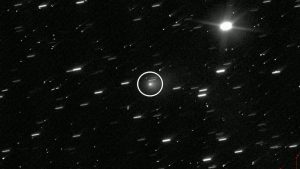A newly discovered interstellar comet called 3I/ATLAS is capturing global attention as it passes through our Solar System, sparking both scientific excitement and viral speculation about its origins.
Key Takeaways
- 3I/ATLAS is only the third confirmed interstellar object ever detected
- It will make its closest approach to the Sun on October 29-30, 2025
- Harvard’s Avi Loeb has noted “unusual” characteristics but emphasizes natural origins are most likely
- The comet poses no threat to Earth and won’t be visible to the naked eye
What is 3I/ATLAS?
Discovered on July 1, 2025 by the ATLAS survey in Chile, 3I/ATLAS stands out as a visitor from another star system. Its hyperbolic trajectory means it’s not bound by the Sun’s gravity, traveling at over 60 km per second through our Solar System.
When to Watch
Astronomers have identified October 29-30, 2025 as the key observation window when 3I/ATLAS makes its closest approach to the Sun, approximately 1.36 AU away. During this period, the comet will shine brightest through telescopes as it releases gases and potentially forms a glowing coma.
While it won’t be visible without equipment and maintains a safe distance of 270 million km from Earth, this brief encounter provides scientists with a unique opportunity to study material that formed around another star billions of years ago.
The Avi Loeb Connection
Harvard Professor Avi Loeb, known for his controversial theories about , has brought additional attention to 3I/ATLAS. He notes the object displays unusual characteristics including high carbon dioxide content, a faint dust tail, and an orbital path aligned with our Solar System’s plane.
While emphasizing that natural origins remain the most probable explanation, Loeb’s statement that “we shouldn’t rule out the artificial” has fueled widespread online discussion.
Social Media Phenomenon
The comet’s popularity stems from several factors: its accessible cosmic nature, inherent mystery, and compelling scientific personalities. The timing of its peak visibility around Halloween has further amplified its cultural impact.
Interstellar Visitors Club
3I/ATLAS joins an exclusive group of confirmed interstellar objects:
- Oumuamua (2017): A cigar-shaped object that showed unusual acceleration
- 2I/Borisov (2019): A more traditional icy comet from another star system
The new visitor is larger than Oumuamua and faster than Borisov, reigniting fundamental questions about our place in the universe.
Scientific Significance
Beyond the viral speculation, 3I/ATLAS offers priceless scientific value. Astronomers will study its composition to understand the chemistry of distant planetary systems. Multiple Earth-based telescopes and upcoming space missions like NASA’s SPHEREx will monitor the comet during its brief passage through our cosmic neighborhood.





